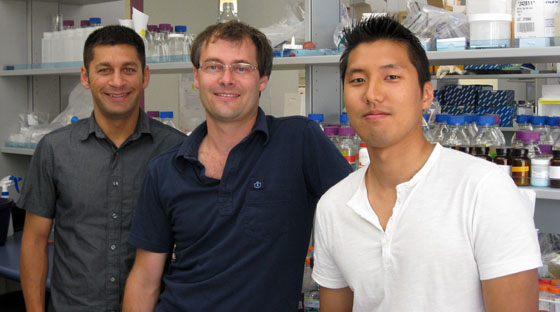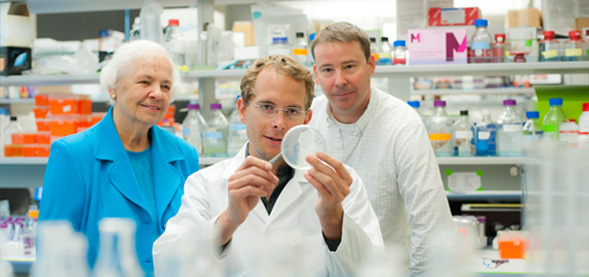Phosphatidic Acid Is a pH Biosensor That Links Membrane Biogenesis to Metabolism
Authors: Barry Young, John Shin, Jesse Chao, Shu Chen Li, Xue Li Guan, Anthony Khong, Eric Jan, Markus R. Wenk, William A. Prinz, Gertien J. Smits, Christopher Loewen. Christopher Loewen Lab, Cell & Developmental Biology Research Group, Department of Cellular & Physiological Sciences.
Published in Science. Vol. 329 no. 5995 pp. 1085-1088 DOI: 10.1126/science.119102
Abstract: Recognition of lipids by proteins is important for their targeting and activation in many signaling pathways, but the mechanisms that regulate such interactions are largely unknown. Here, we found that binding of proteins to the ubiquitous signaling lipid phosphatidic acid (PA) depended on intracellular pH and the protonation state of its phosphate headgroup. In yeast, a rapid decrease in intracellular pH in response to glucose starvation regulated binding of PA to a transcription factor, Opi1, that coordinately repressed phospholipid metabolic genes. This enabled coupling of membrane biogenesis to nutrient availability.





